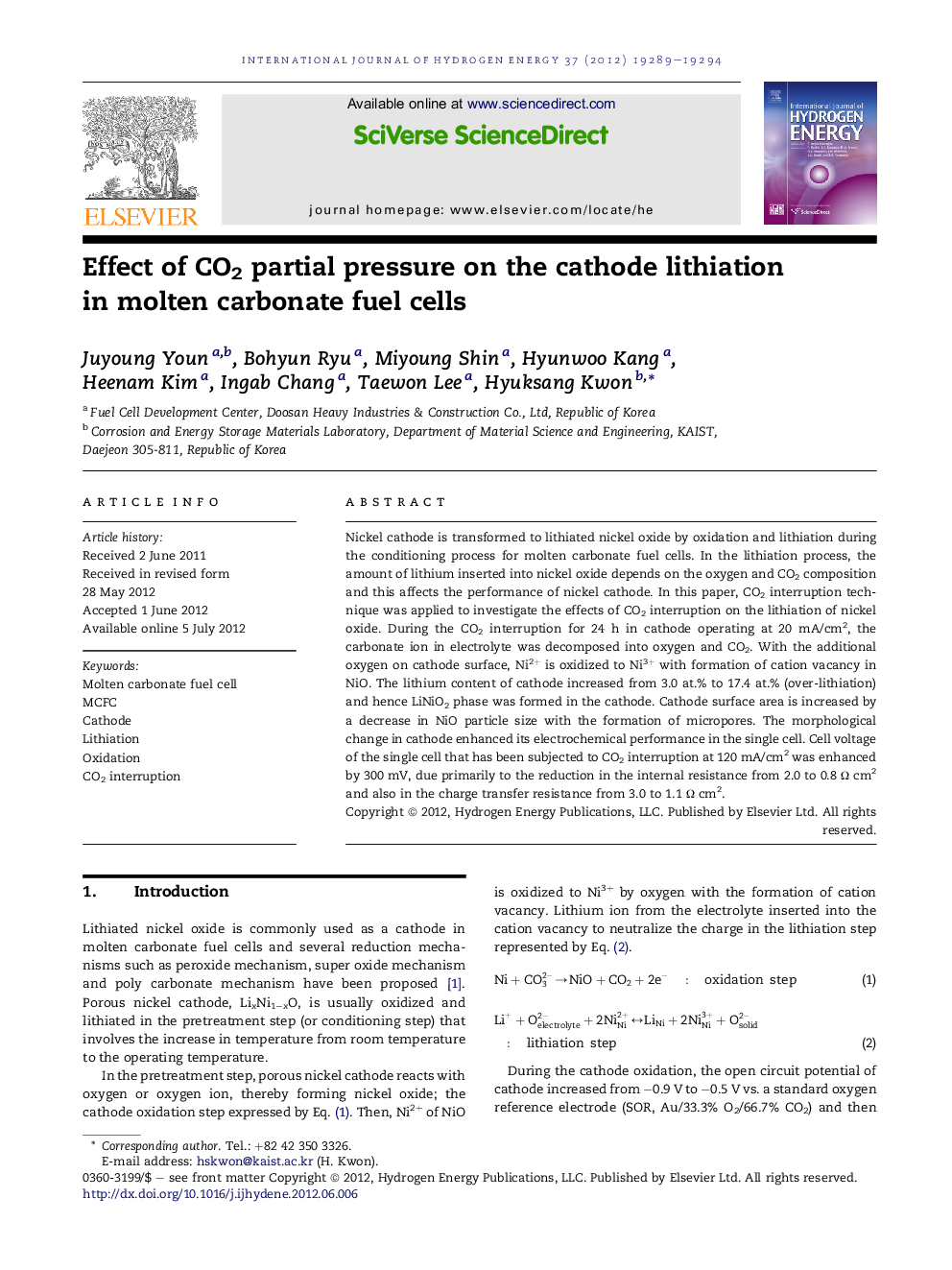| Article ID | Journal | Published Year | Pages | File Type |
|---|---|---|---|---|
| 1276139 | International Journal of Hydrogen Energy | 2012 | 6 Pages |
Nickel cathode is transformed to lithiated nickel oxide by oxidation and lithiation during the conditioning process for molten carbonate fuel cells. In the lithiation process, the amount of lithium inserted into nickel oxide depends on the oxygen and CO2 composition and this affects the performance of nickel cathode. In this paper, CO2 interruption technique was applied to investigate the effects of CO2 interruption on the lithiation of nickel oxide. During the CO2 interruption for 24 h in cathode operating at 20 mA/cm2, the carbonate ion in electrolyte was decomposed into oxygen and CO2. With the additional oxygen on cathode surface, Ni2+ is oxidized to Ni3+ with formation of cation vacancy in NiO. The lithium content of cathode increased from 3.0 at.% to 17.4 at.% (over-lithiation) and hence LiNiO2 phase was formed in the cathode. Cathode surface area is increased by a decrease in NiO particle size with the formation of micropores. The morphological change in cathode enhanced its electrochemical performance in the single cell. Cell voltage of the single cell that has been subjected to CO2 interruption at 120 mA/cm2 was enhanced by 300 mV, due primarily to the reduction in the internal resistance from 2.0 to 0.8 Ω cm2 and also in the charge transfer resistance from 3.0 to 1.1 Ω cm2.
